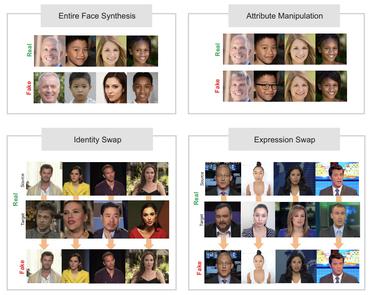Two-branch Recurrent Network for Isolating Deepfakes in Videos
The current spike of hyper-realistic faces artificially generated using deepfakes calls for media forensics solutions that are tailored to video streams and work reliably with a low false alarm rate at the video level. We present a method for deepfake detection based on a two-branch network structure that isolates digitally manipulated faces by learning to amplify artifacts while suppressing the high-level face content. Unlike current methods that extract spatial frequencies as a preprocessing step, we propose a two-branch structure: one branch propagates the original information, while the other branch suppresses the face content yet amplifies multi-band frequencies using a Laplacian of Gaussian (LoG) as a bottleneck layer. To better isolate manipulated faces, we derive a novel cost function that, unlike regular classification, compresses the variability of natural faces and pushes away the unrealistic facial samples in the feature space. Our two novel components show promising results on the FaceForensics++, Celeb-DF, and Facebook's DFDC preview benchmarks, when compared to prior work. We then offer a full, detailed ablation study of our network architecture and cost function. Finally, although the bar is still high to get very remarkable figures at a very low false alarm rate, our study shows that we can achieve good video-level performance when cross-testing in terms of video-level AUC.
PDF Abstract ECCV 2020 PDF ECCV 2020 Abstract



 FaceForensics++
FaceForensics++
 Celeb-DF
Celeb-DF
 DFDC
DFDC